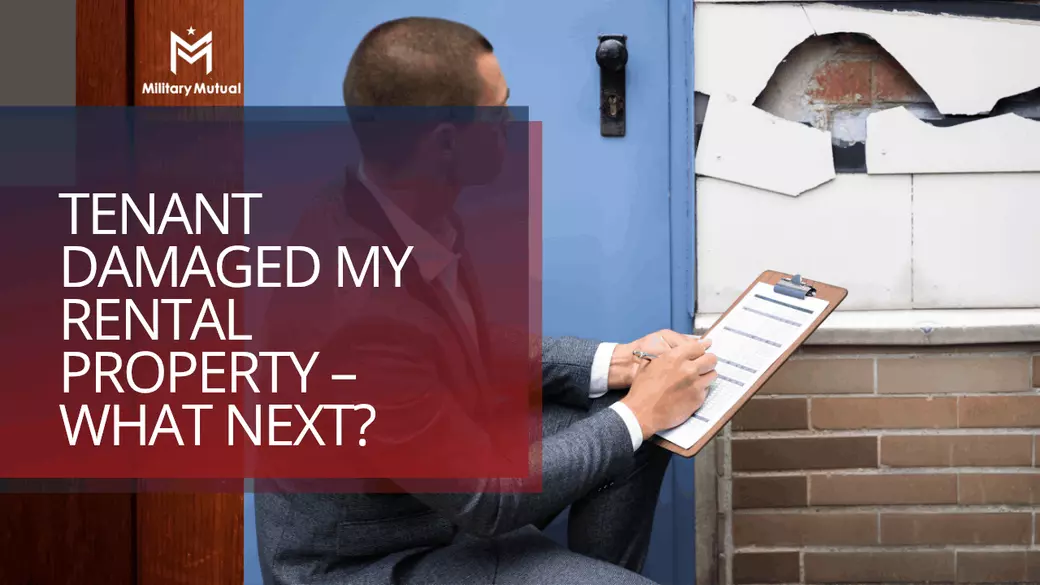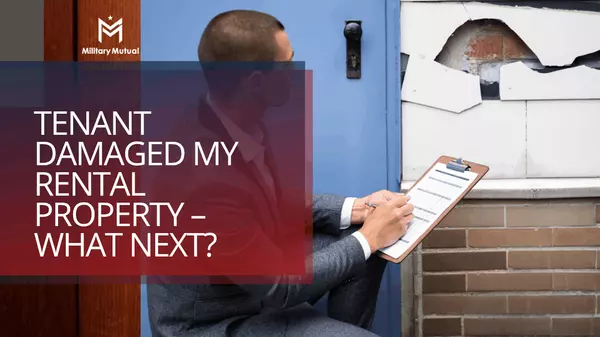Tenant Damaged My Rental Property – What Next?

🛠️ Tenant Damaged My Rental Property – What Next?
Published: June 2025
By Derek Barksdale Founder of Military Mutual
Discovering that a tenant has damaged your rental property is every landlord’s nightmare. Whether it’s a broken appliance, stained carpet, or holes in the wall, the big question is: What should you do next?
Don’t panic. Here’s a step-by-step guide on how to handle tenant-caused damage legally and effectively—while protecting your rights and your property.
✅ 1. Document Everything Immediately
Before cleaning or repairing anything, take clear, dated photos and videos of the damage.
What to include:
-
Wide shots and close-ups of affected areas
-
Time-stamped photos
-
Notes on the condition before and after (compare to move-in inspection)
📸 Documentation is your strongest defense if you need to file a claim or go to court.
📝 2. Review the Lease Agreement
Go back to the lease to confirm:
-
Who’s responsible for what types of damage
-
Security deposit terms
-
Notice and repair provisions
-
Pet or smoking policies (if applicable)
📄 A solid lease gives you legal grounds to hold the tenant accountable.
💬 3. Communicate With the Tenant
Inform the tenant in writing about:
-
The damage
-
Expected repairs and costs
-
Whether the security deposit will be used
-
Their right to dispute or respond (if required by law)
💡 Always keep communication professional and well-documented.
🧾 4. Estimate the Cost of Repairs
Gather repair estimates from licensed contractors or vendors. This helps you:
-
Justify security deposit deductions
-
Build evidence for potential small claims court
-
Budget for out-of-pocket expenses (if damage exceeds deposit)
💰 Be transparent with tenants—provide receipts or invoices when possible.
🔐 5. Use the Security Deposit (If Applicable)
In most states, you can deduct repair costs from the security deposit—but only for actual damage, not normal wear and tear.
Examples of chargeable damage:
-
Holes in walls
-
Broken windows or doors
-
Ruined flooring
-
Unauthorized alterations
📅 Check your state’s laws for the timeline to return the remaining deposit (e.g., California requires it within 21 days).
⚖️ 6. Pursue Legal Action if Needed
If the damage exceeds the security deposit or the tenant refuses to pay:
Your options:
-
Send a demand letter for the outstanding balance
-
File a small claims case (if under the monetary limit in your state)
-
Consult with a real estate attorney for serious or intentional damage
⚠️ Avoid retaliation or withholding services—it can backfire legally.
🧰 7. Prevent Future Damage
After repairs, take steps to avoid repeat issues:
-
Conduct thorough tenant screening
-
Perform routine inspections during tenancy
-
Include a detailed move-in checklist and condition report
-
Strengthen lease language around tenant responsibilities and consequences
🔁 Proactive property management saves time, money, and frustration.
✅ Final Thoughts: Stay Calm, Act Smart
Dealing with tenant damage can be stressful—but it's a manageable part of being a landlord. With clear documentation, legal compliance, and a professional approach, you can recover your losses and protect your property long-term.
Categories
Recent Posts










"My job is to find and attract mastery-based agents to the office, protect the culture, and make sure everyone is happy! "
